

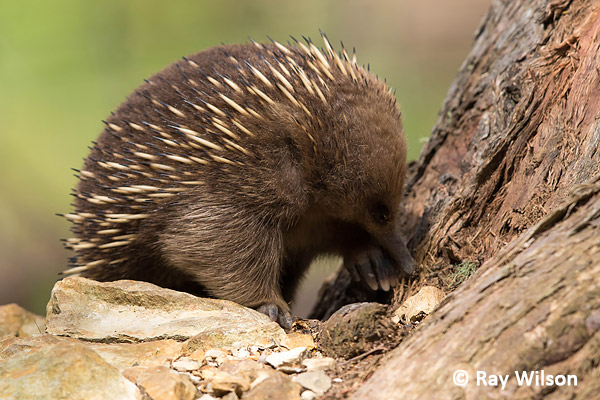
Unlike many native Australian mammals, the arrival of humans doesn't seem to have had much effect on their abundance and Echidnas remain common and widespread throughout Australia, from snowy mountain slopes to dry, intensely hot deserts. The reasons for their resilience against introduced predators and habitat degradation can probably be attributed fairly equally to their spines providing an effective defence against predators and their prefered prey species, ants and termites, being abundant more or less everywhere.
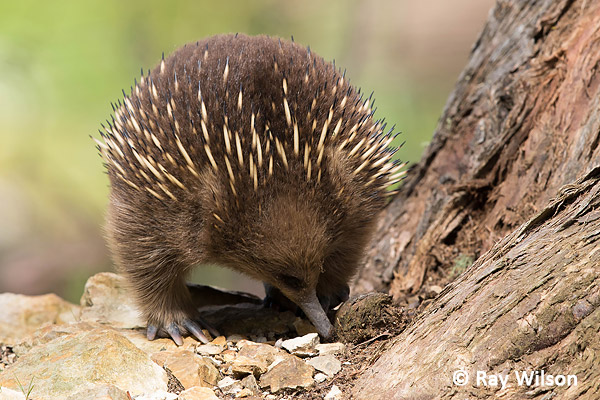
Echidnas never develop teeth and their tubelike snout is perfectly adapted for feeding on the ants and termites that make up the bulk of the Echidna's diet. Their prey is ensnared by a long, highly flexible, sticky tongue then ground between a pad of horny spines at the base of the tongue and a similar set of spines on the palate to break it up before swallowing.
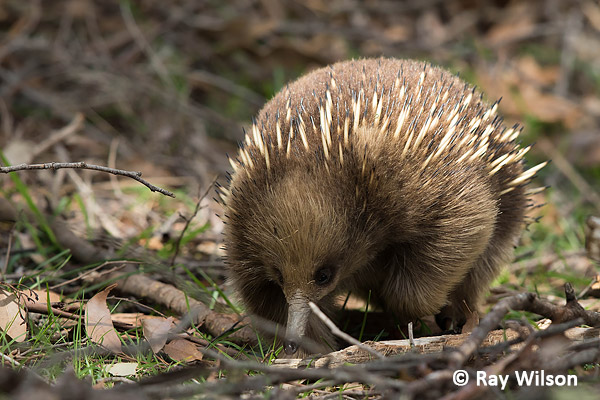
The fur on Tasmanian Echidnas is a lot longer and thicker than on the mainland, due to the cooler climate, and sometimes completely obscures the spines on its back.
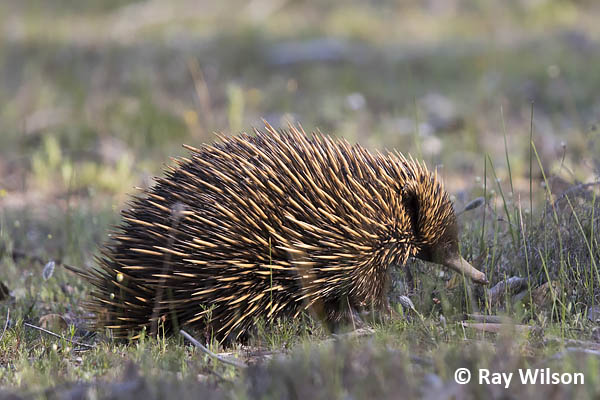
After a short gestation period, Echidnas lay a single egg directly into its pouch. The baby escapes from the leathery shell 10-11 days later with the aid of an egg tooth and remains within its mother's pouch for about two months feeding on its mothers milk. When it is about 15-21cm long, it is ejected from the pouch and left in a safe place while the mother goes off foraging. She often returns to the youngster's hiding place to allow it to suckle her milk. The young is weened when it is about 6-7months old and adults may live for over 20 years in the wild (over 50 years in captivity).
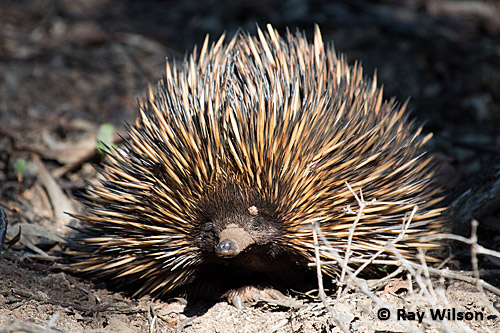
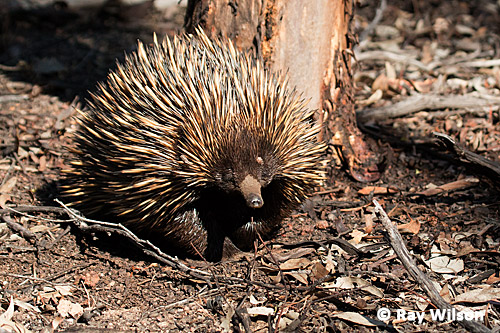
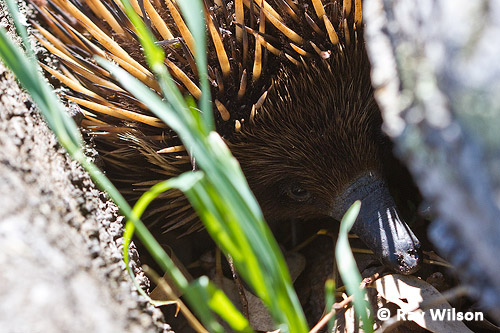
Ray Wilson owns the copyright of all images on this site.
They may not be used or copied in any form without prior written permission.
raywilsonphotography@googlemail.com